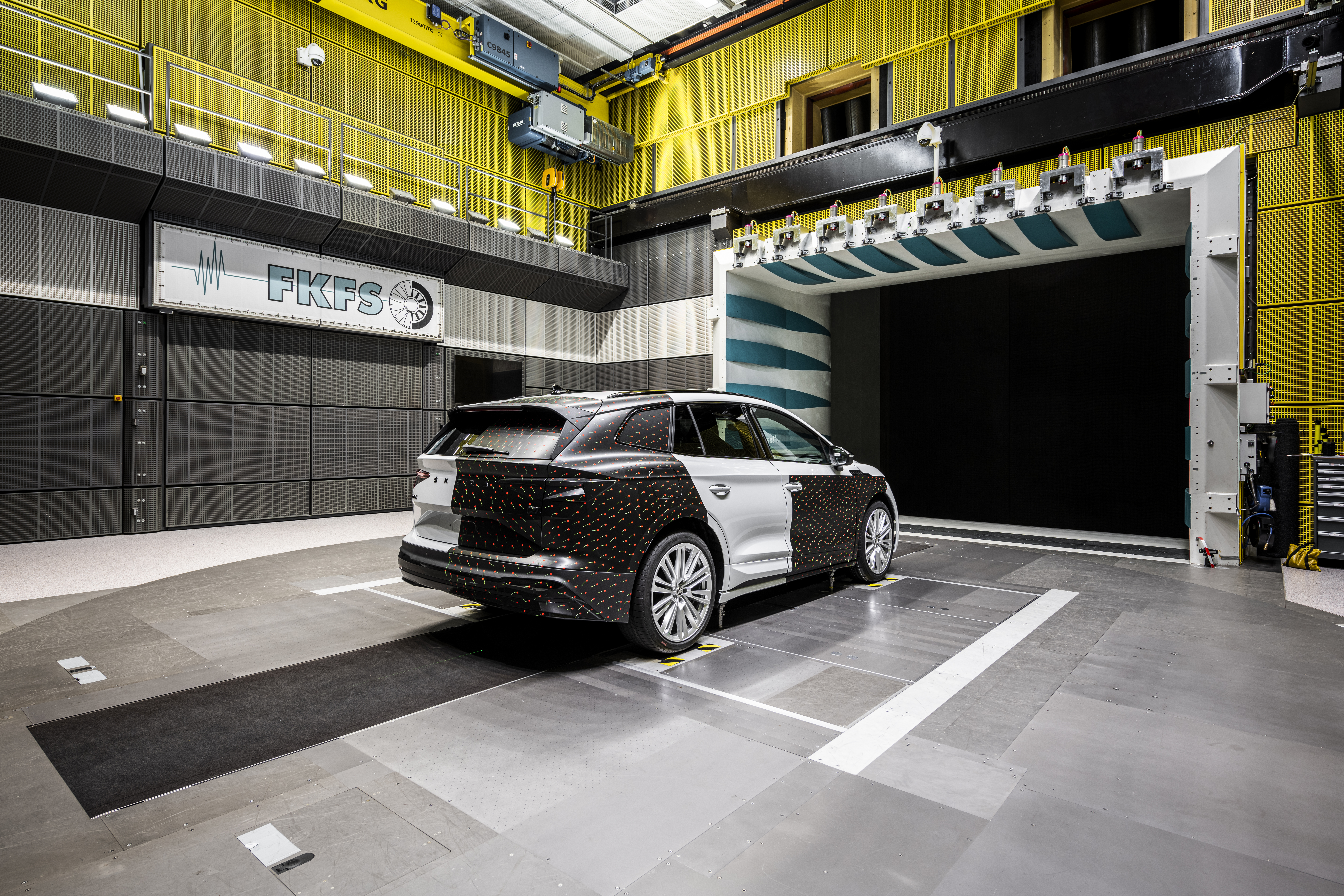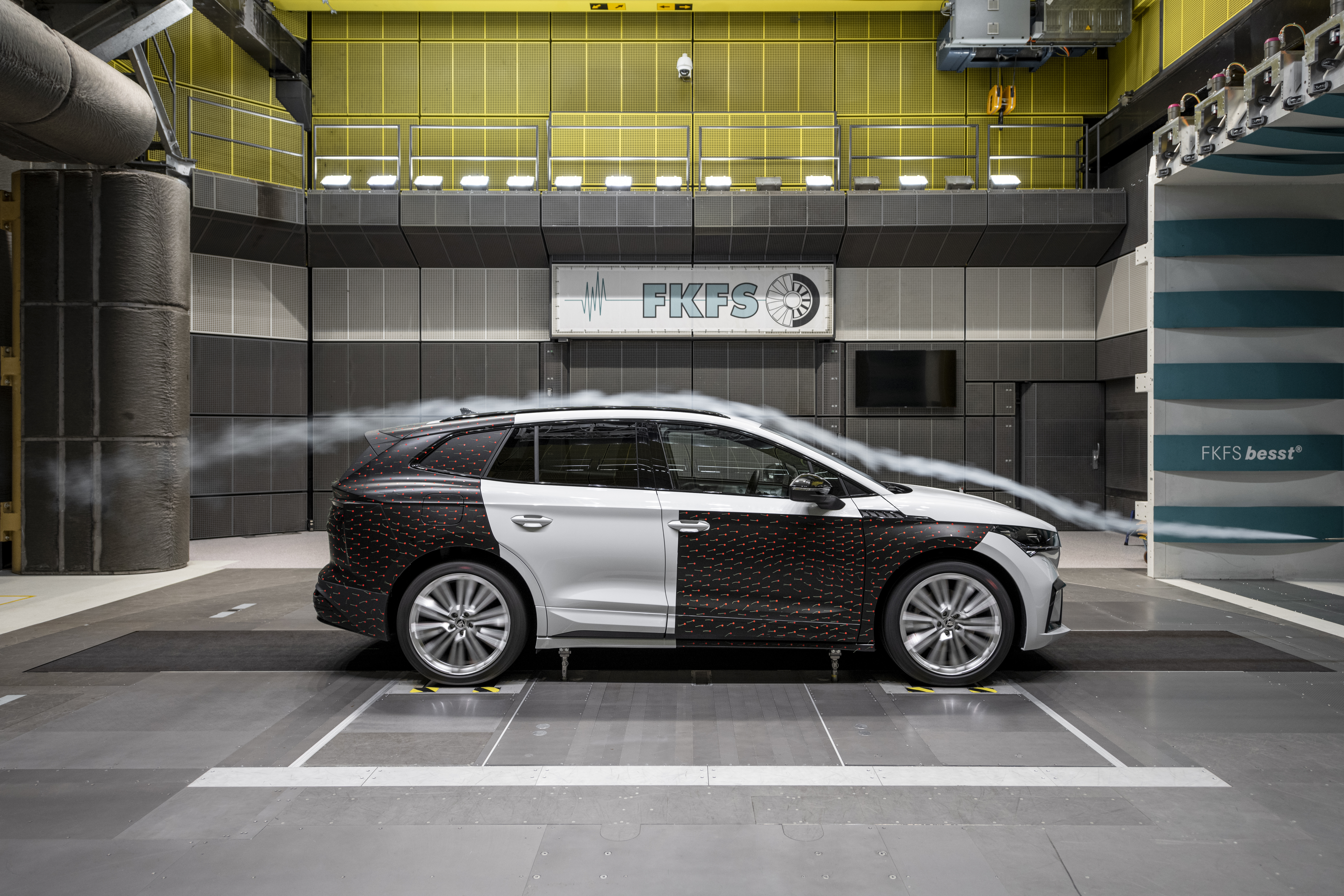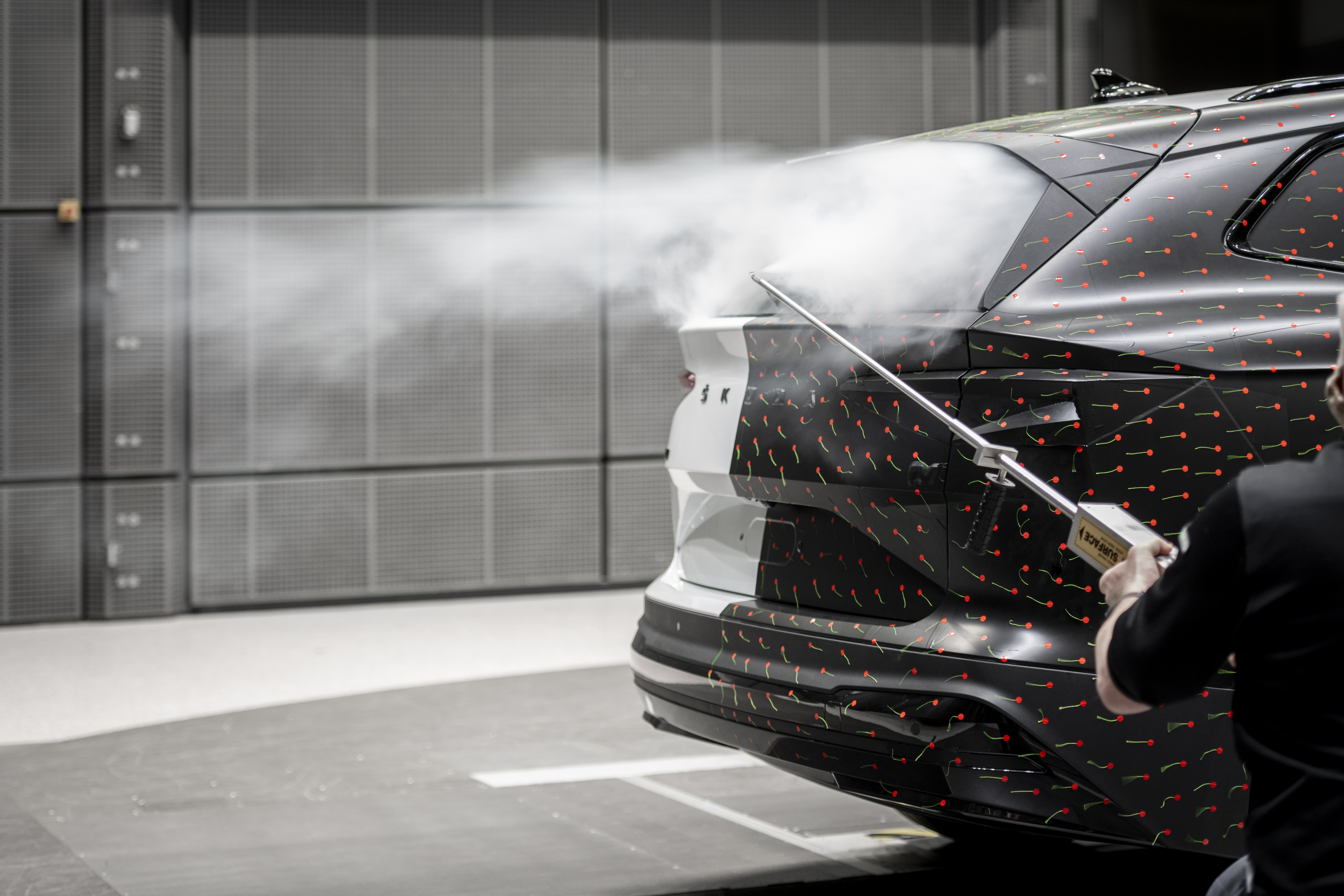The white car is partly covered with black foil, with green pieces of string hanging from red dots. A cotton string test is about to start. Rollers in the floor turn the car’s wheels and the tunnel operator switches on a giant fan. Soon there is a noticeable wind passing over the car and the pieces of string begin to flutter.
“By tracking the movement of the cotton strings, we can determine the airflow on the surface of the car,” explains Jiří Novák, chief aerodynamicist for the Enyaq iV project at Škoda Technical Development. In this test, like in all others, the wheels are made to spin because their movement also affects the airflow around the car.
And it is making the airflow around the car and its parts as uncomplicated as possible that the aerodynamics experts want. “The goal is to keep the cd drag coefficient as low as possible. Reducing it means lower fuel consumption and, of course, a longer range per charge in an electric car,” says Zdeněk Sloupenský, external aerodynamics coordinator for the MEB platform.
 The car ready for testing in the wind tunnel
The car ready for testing in the wind tunnel
This time, it is a pre-production Enyaq RS iV that is standing in the tunnel at the University of Stuttgart. Approximately nine-tenths of the aerodynamics development work is done virtually using computer simulations, which are assisted by the super-powerful HPC computer used by Škoda. Yet this is not the first time the aerodynamics experts have come across this car in real life. They have already been in the tunnel with a 1:1 scale model and a working prototype. Virtual simulations help to understand what is happening in the flow around the car and why. Measuring in the tunnel is the culmination of the entire development and confirms the development process that was built on calculations.










 Zdeněk Sloupenský
Zdeněk Sloupenský

 Jiří Novák
Jiří Novák



























